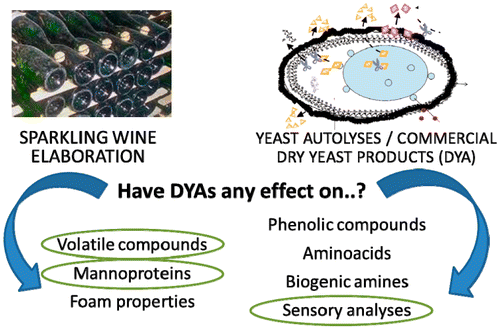Wine-making shortcut gives bubbly a fruitier aroma

The best sparkling wines take months to ferment to perfection. In recent years, many winemakers have turned to commercial yeast products to give this process a boost. How they ultimately affect bubbly has been an open question, but now scientists have stepped in to find out. They report their findings in ACS' Journal of Agricultural and Food Chemistry.
When sparkling wine is made, yeast cells burst open in a process called autolysis. This releases a special kind of protein called mannoproteins that, in still wines (the non-bubbly kind), can reduce astringency and bitterness, improve aroma and enhance body. Although commercial products rich in these mannoproteins are already used to make both regular and sparkling wines, few studies have looked into how well they work in the effervescent varieties. Silvia Pérez-Magariño and colleagues wanted to fill that void.
The researchers made different varieties of sparkling wine with four yeast autolysates. They found that in general, the added autolysates didn't affect the foam quality of the wines or the phenolic compound content. One product, which was associated with a 21 to 34 percent increase in mannoproteins, enhanced the fruity aromas in some of the wines.
More information: Use of Commercial Dry Yeast Products Rich in Mannoproteins for White and Rosé Sparkling Wine Elaboration, J. Agric. Food Chem., 2015, 63 (23), pp 5670–5681 . DOI: 10.1021/acs.jafc.5b01336
Abstract
In sparkling wines, mannoproteins released during yeast autolysis largely affect their final quality. This process is very slow and may take several months. The aim of this work was to study the effect of several commercial dry yeast autolysates on the chemical composition, foam, and sensory properties of white and rosé sparkling wines aged on lees for 9 months during two consecutive vintages. The addition of these products in the tirage phase did not affect either the content of phenolic compounds, amino acids, and biogenic amines or the foam properties. The commercial product with the highest mannoprotein content and the highest purity caused significant changes in the volatile composition of the wines and enhanced the fruity aromas in both Verdejo and Godello sparkling wines.
Journal information: Journal of Agricultural and Food Chemistry
Provided by American Chemical Society





















